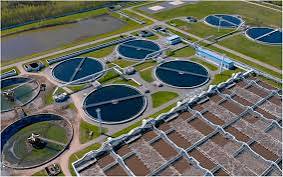 Sewage treatment is the process of removing contaminants from wastewater, both household sewage and wastewater from industrial processes, before it is released into the environment or reused.
Sewage treatment is the process of removing contaminants from wastewater, both household sewage and wastewater from industrial processes, before it is released into the environment or reused.
Proper sewage treatment protects public health and the environment, as untreated sewage can contain harmful pathogens, toxins, and pollutants that can contaminate water sources and harm aquatic life.
Sewage treatment’s goal is to protect public health and the environment by reducing the levels of pollutants in the wastewater.
The treatment process typically involves several stages:
1. Preliminary treatment: This stage involves the removal of large solid objects, such as rags, sticks, and debris, from the sewage using screens or grit chambers, preventing clogging and damage to the treatment equipment.
2. Primary treatment: In this stage, suspended solids and organic matter are removed from the sewage by physical and mechanical processes, such as sedimentation and flotation.
Solids settle to the bottom of the tank, forming sludge.
Oils and greases float to the surface and are skimmed off.
3. Secondary treatment stage involves the biological treatment of the sewage to remove dissolved organic matter.
Aerobic biological processes, such as activated sludge or trickling filters, are commonly used.
Microorganisms, such as bacteria and protozoa, consume the organic matter and convert it into carbon dioxide, water, and additional biomass.
4. Tertiary treatment: includes advanced filtration, disinfection (using chlorine, ultraviolet light, or ozone), and nutrient removal (nitrogen and phosphorus).
5. Sludge treatment: The sludge collected is treated to stabilize it, reduce its volume, and make it suitable for disposal or beneficial reuse. Includes anaerobic digestion, composting, or dewatering.
After the treatment process, water is either discharged into receiving water bodies, such as rivers, lakes, or oceans, or reused for various purposes, such as irrigation, industrial processes, or even potable water supply, depending on the level of treatment and local regulations.
